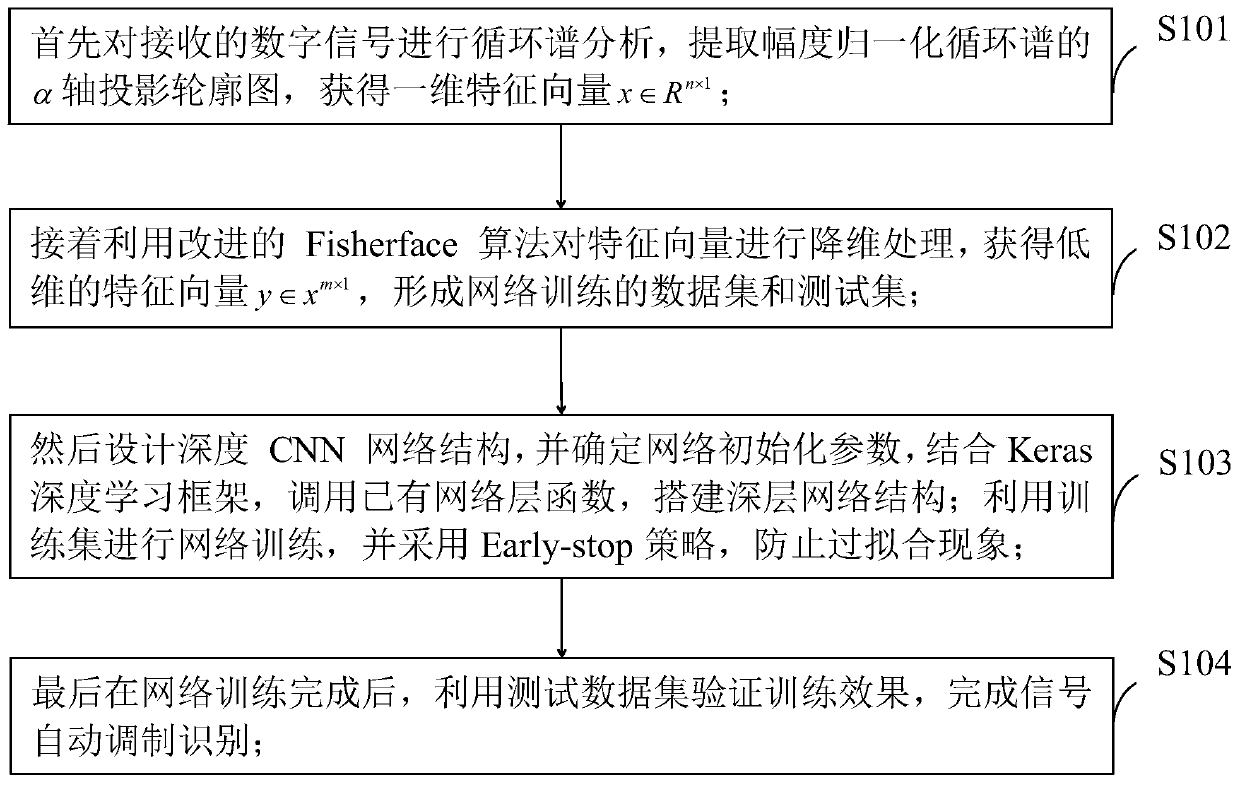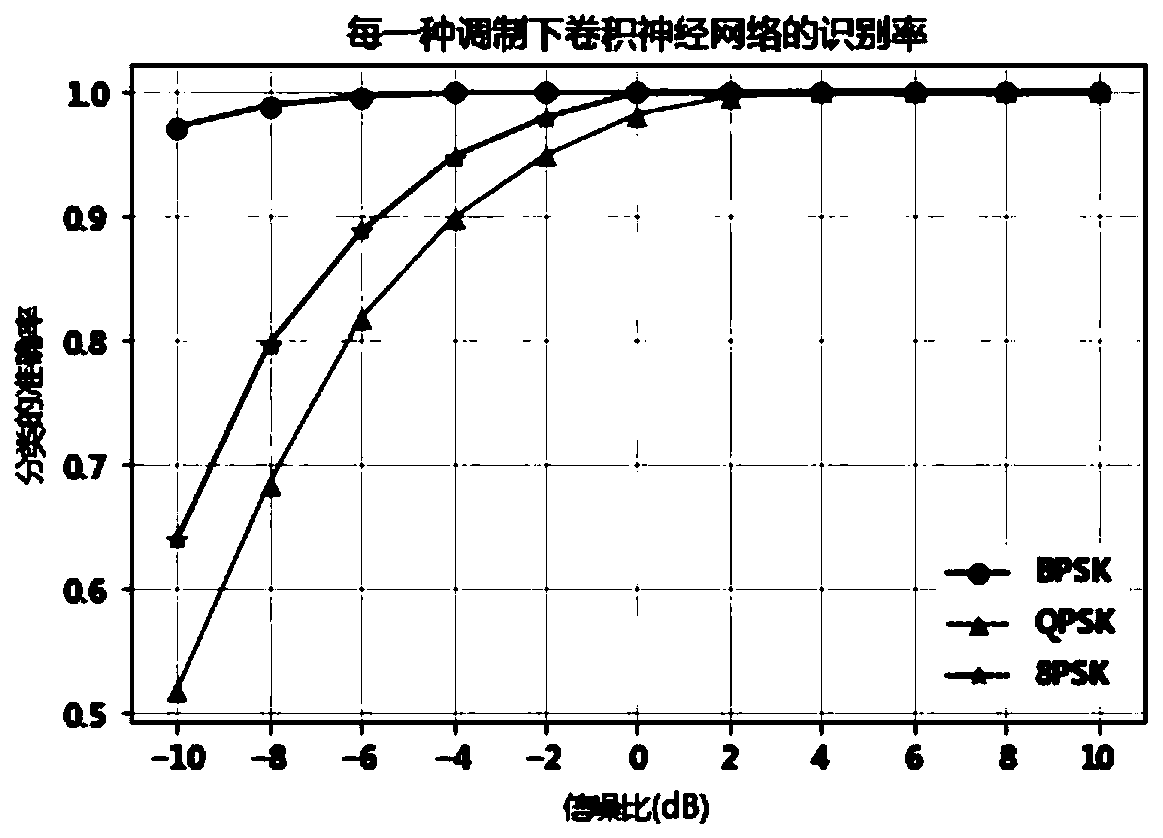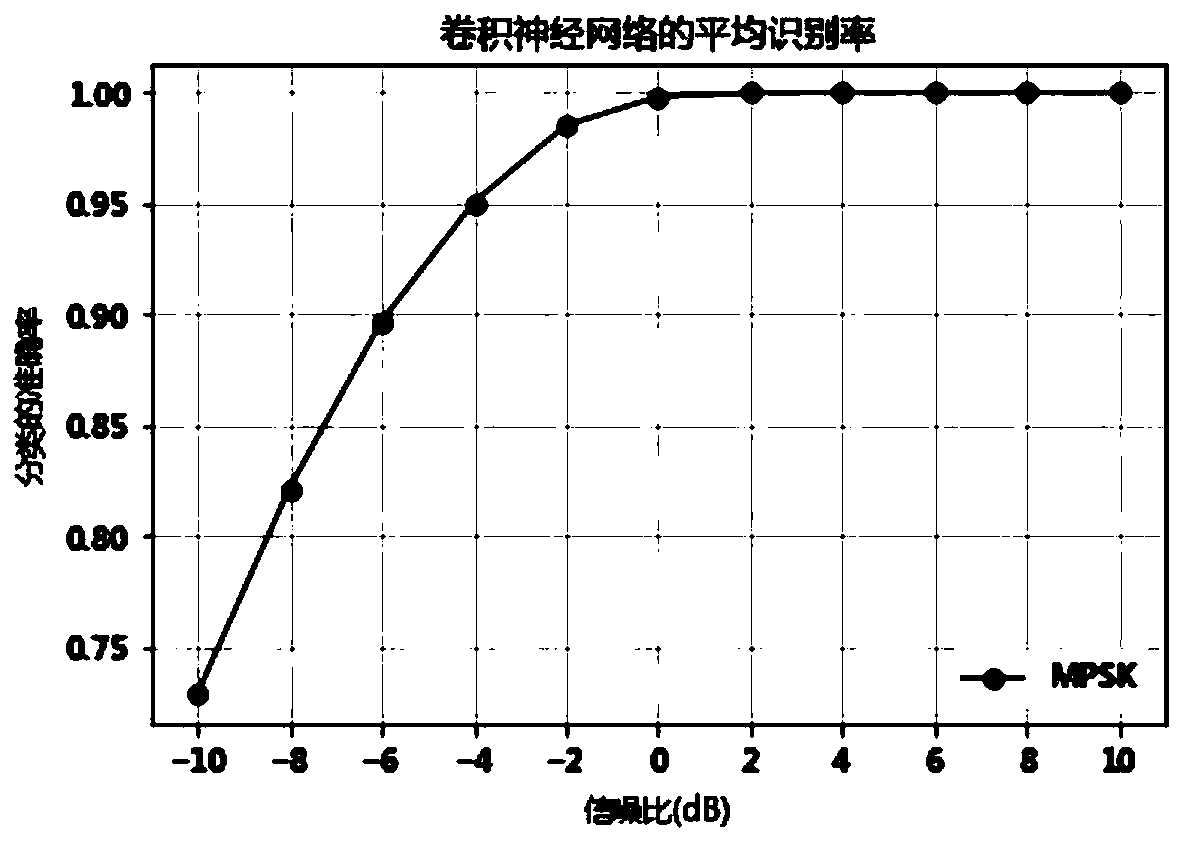CNN convolutional neural network-based digital signal automatic modulation identification method
A convolutional neural network and digital signal technology, applied in character and pattern recognition, digital transmission system, modulated carrier system, etc., can solve the problem of narrow recognition range, large influence of statistical analysis of channel effect, lack of design and optimization of deep neural network Complete theoretical system and other issues to achieve good recognition effect
- Summary
- Abstract
- Description
- Claims
- Application Information
AI Technical Summary
Problems solved by technology
Method used
Image
Examples
Embodiment Construction
[0027] In order to make the object, technical solution and advantages of the present invention more clear, the present invention will be further described in detail below in conjunction with the examples. It should be understood that the specific embodiments described here are only used to explain the present invention, not to limit the present invention.
[0028] The invention extracts the amplitude-normalized α-section features of the cyclic spectrum of the MPSK and MQAM modulation signals, uses the improved Fisherface to perform dimensionality reduction processing, and sends the processed features into a deep neural network to complete modulation recognition.
[0029] The application principle of the present invention will be described in detail below in conjunction with the accompanying drawings.
[0030] like figure 1 As shown, the CNN convolutional neural network-based digital signal automatic modulation recognition method provided by the embodiment of the present inven...
PUM
 Login to View More
Login to View More Abstract
Description
Claims
Application Information
 Login to View More
Login to View More - R&D
- Intellectual Property
- Life Sciences
- Materials
- Tech Scout
- Unparalleled Data Quality
- Higher Quality Content
- 60% Fewer Hallucinations
Browse by: Latest US Patents, China's latest patents, Technical Efficacy Thesaurus, Application Domain, Technology Topic, Popular Technical Reports.
© 2025 PatSnap. All rights reserved.Legal|Privacy policy|Modern Slavery Act Transparency Statement|Sitemap|About US| Contact US: help@patsnap.com



